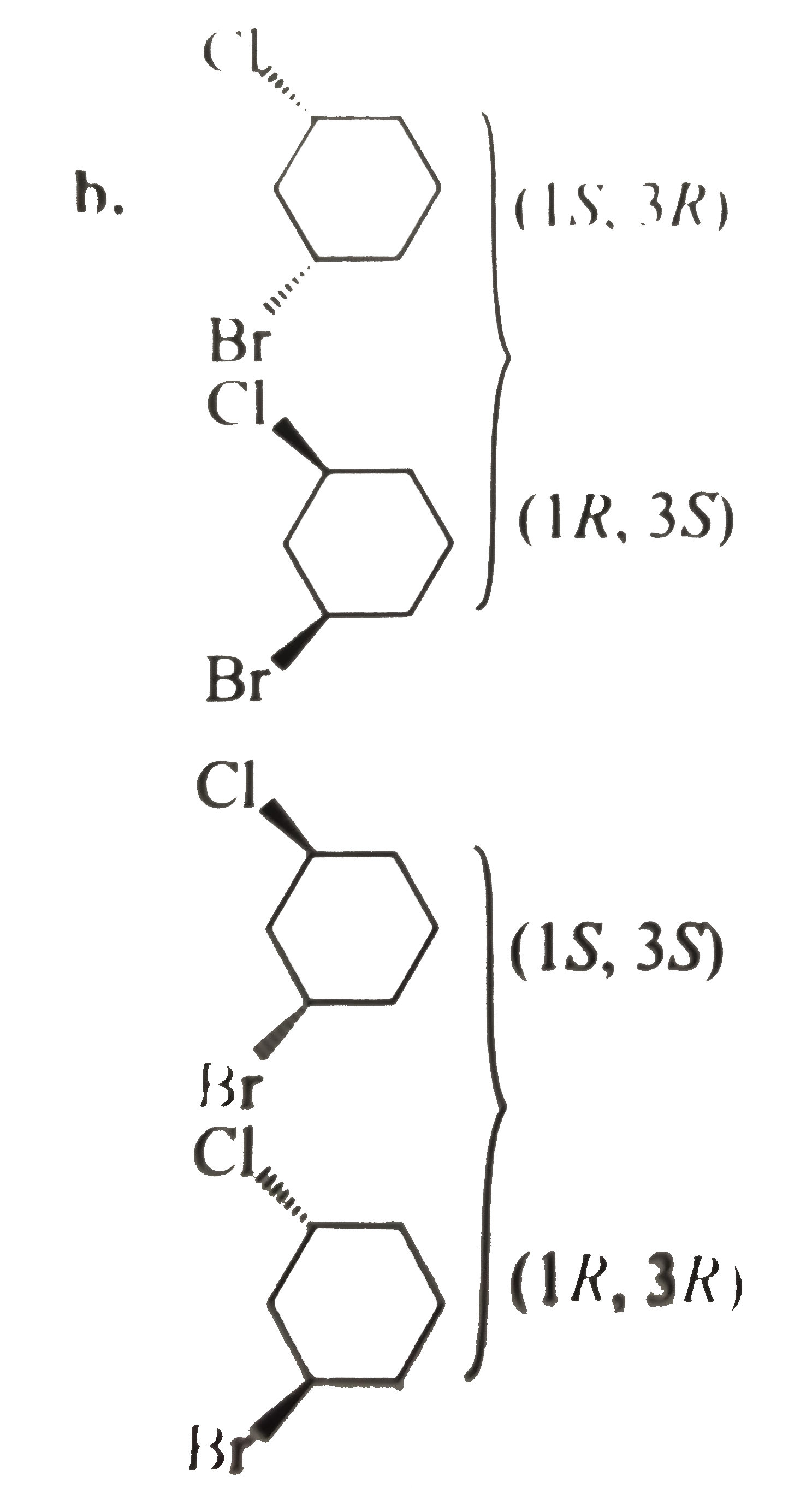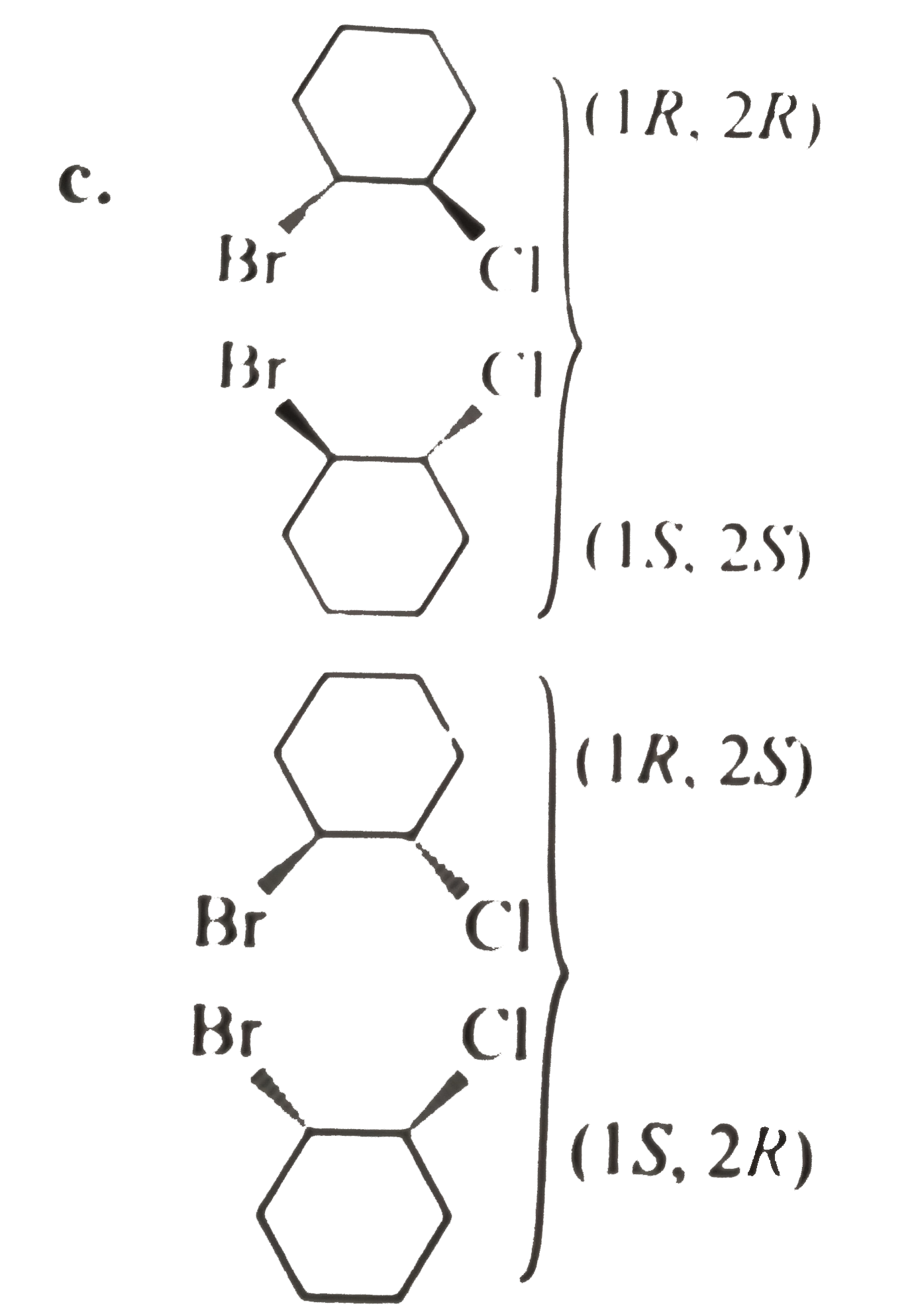Write formulae for all the isomers of each of the following. Designate pairs of enantiomers and achiral compounds where they exist.
a. 1-Bromo-4- chlorocyclohexane
b. 1-Bromo-3-chlorocyclohexane
c. 1-Bromo-2- chlorocyclohexane
a.
b. 
c.
Topper's Solved these Questions
- ISOMERISMBook:CENGAGE CHEMISTRY ENGLISHChapter:ISOMERISMExercise:(Linked Comprehension Type)Exercise
Explore 13 Videos
- ISOMERISMBook:CENGAGE CHEMISTRY ENGLISHChapter:ISOMERISMExercise:Multiple choice questions (Exercise)
Explore 38 Videos
- ISOMERISMBook:CENGAGE CHEMISTRY ENGLISHChapter:ISOMERISMExercise:Example
Explore 15 Videos
- IONIC EQUILIBRIUMBook:CENGAGE CHEMISTRY ENGLISHChapter:IONIC EQUILIBRIUMExercise:Archives Subjective
Explore 28 Videos
- NCERT BASED EXERCISEBook:CENGAGE CHEMISTRY ENGLISHChapter:NCERT BASED EXERCISEExercise:Chemical Equilibrium
Explore 73 Videos
Similar Questions
Write the structure of 1-Bromo-4-chlorobut-2-ene
View SolutionWrite the structural formula of following compounds:
1-bromo-3-chlorocyclohexane
View SolutionRearrange the compounds of each of the following sets in order of reactivity towards SN2 displacement:
2-Bromo-2-methyl butane, 1-Bromo-pentane, 2-Bromopentane.
View SolutionRearrange the compounds of each of the following sets in order of reactivity towards SN2 displacement:
1-Bromo-2-methyl butane, 2-Bromo-2-methyl butane, 3-Bromo-2-methyl butane.
View SolutionRearrange the compounds of each of the following sets in order of reactivity towards SN2 displacement: 1-Bromobutane, 1-Bromo-2, 2-dimethylpropane, 1-Bromo-2-methylbutane
View SolutionDraw the structures of the following compounds:
1-bromo-3-chlorocyclohexane
View SolutionWrite the structural formulae of the following :
3-Bromo-4-phenylpentanoic acid
View SolutionWrite the structural formulae of the following :
3-Bromo-4-phenylpentanoic acid
View SolutionWrite the structural formulae of the following :
3-Bromo-4-phenylpentanoic acid
View SolutionWrite down all the subsets of the following sets :
(i) {a}
(b) {a, b}
(c) {1,2,3}
(d) ϕ
View Solution